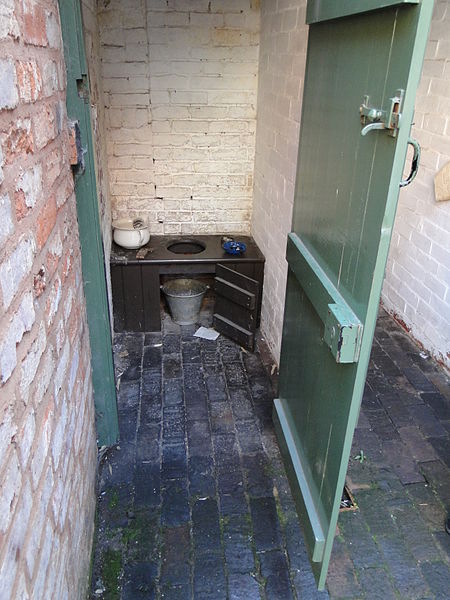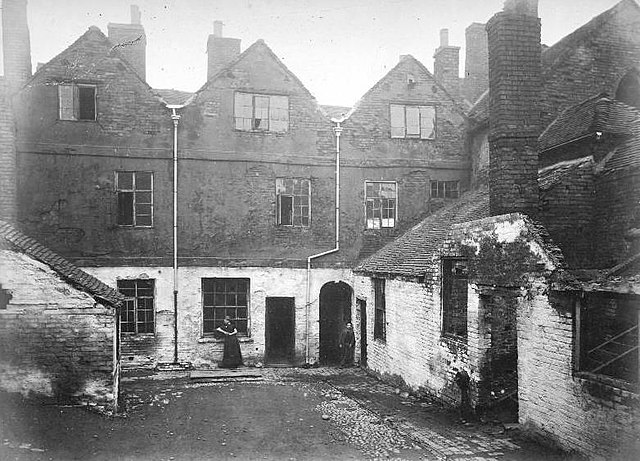The Birmingham Back to Backs are the city's last surviving court of back-to-back houses. They are preserved as examples of the thousands of similar houses that were built around shared courtyards, for the rapidly increasing population of Britain's expanding industrial towns. They are a very particular sort of British terraced housing. This sort of housing was deemed unsatisfactory, and the passage of the Public Health Act 1875 meant that no more were built; instead byelaw terraced houses took their place. This court, at 50–54 Inge Street and 55–63 Hurst Street, is now operated as a historic house museum by the National Trust.
The courtyard behind the Back to Back Houses
The exterior houses, showing the shop fronts and the entrance to the courtyard
Panorama of the central courtyard
A pail closet
Back-to-backs are a form of terraced houses in the United Kingdom, built from the late 18th century through to the early 20th century in various forms. Many thousands of these dwellings were built during the Industrial Revolution for the rapidly increasing population of expanding factory towns. Back-to-backs share party walls on two or three of their four sides, with the front wall having the only door and windows.
Street-fronted back-to-back terraces in Harold Grove, Leeds
Back-to-back housing courtyard, 1883
Plans for houses in Nottingham, 1844
With no rear yard, across-street washing lines are employed with a pulley operated from street level.








